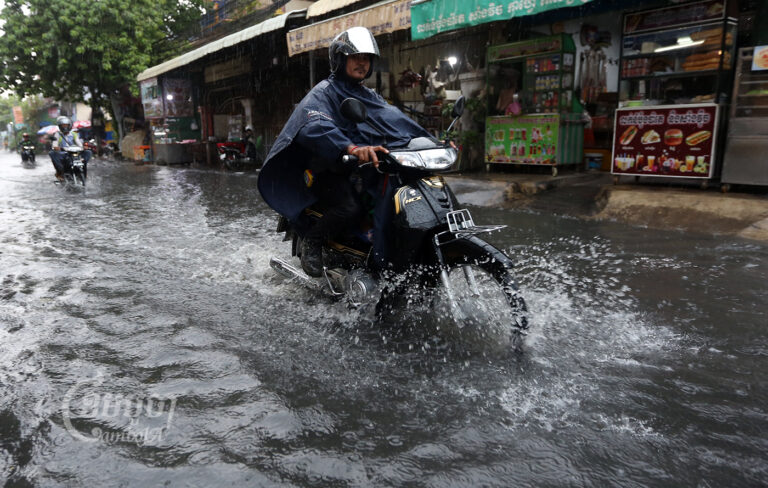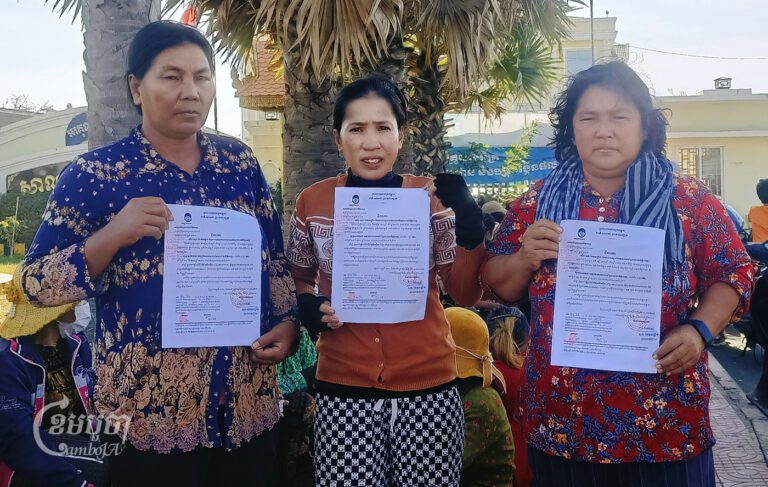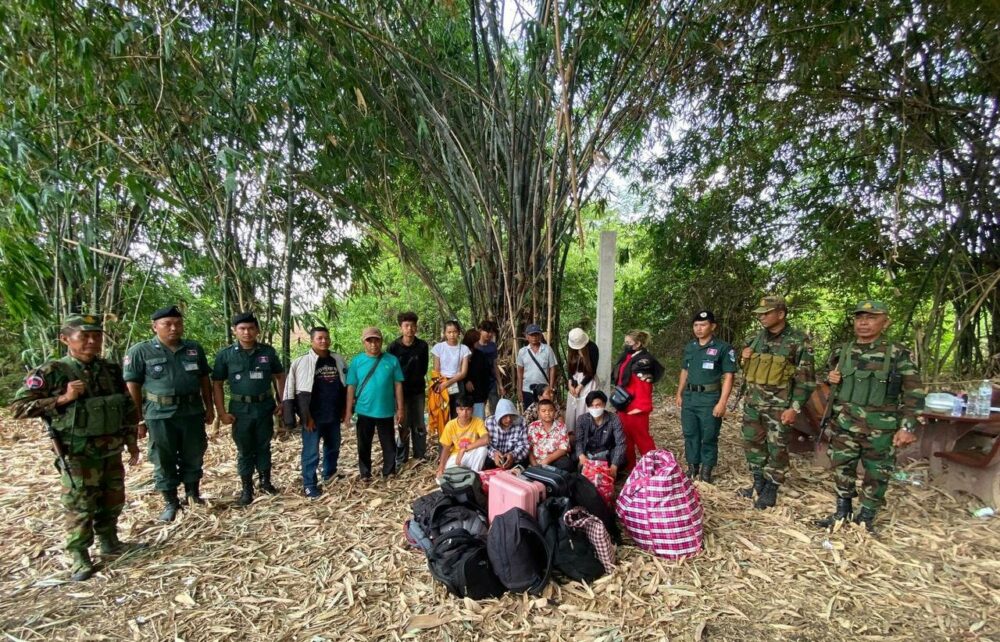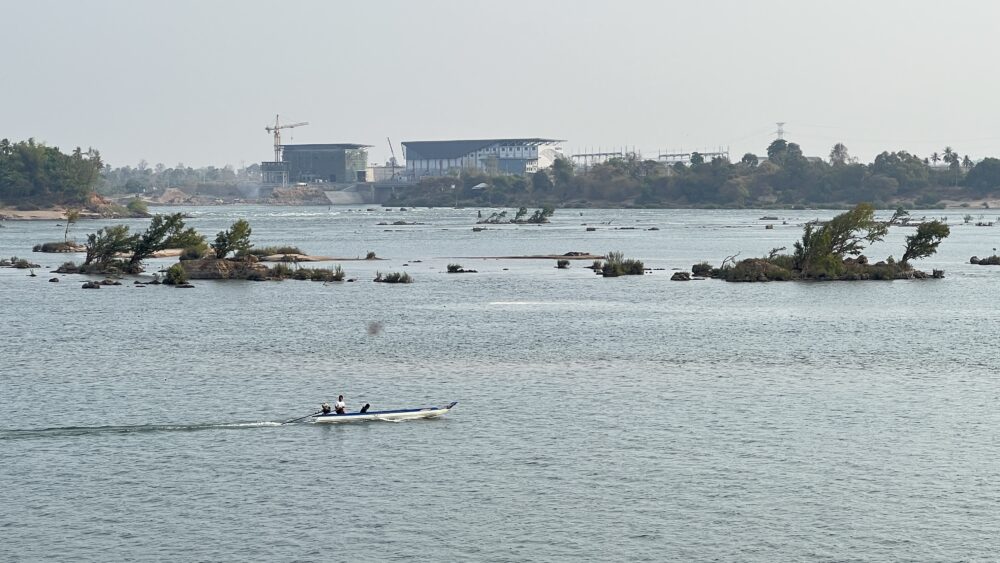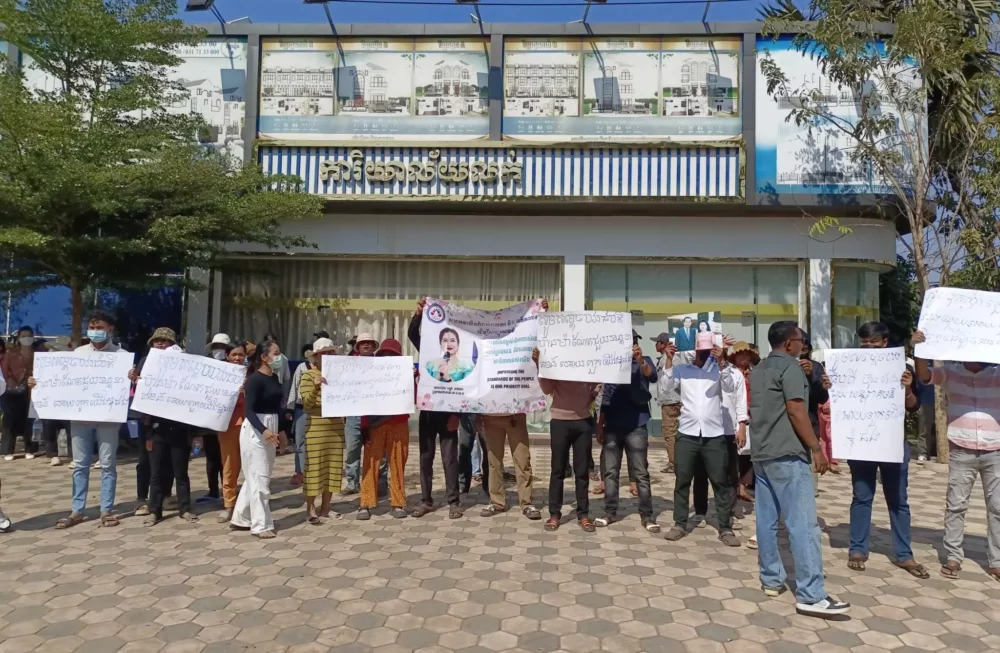Every time heavy rains hit Sen Sok district’s O’Bek Ka’am commune, the home of street vendor Da Vika, 31, becomes flooded.
“What I have to do first after it rains is to throw water out of the inside of my house,” she said. “My house is near the sewage [canal] and dirty water flows into the house when there is rainfall, and this is making life dirty.”
Lakes in and around Phnom Penh previously served as natural rainwater reservoirs, but many have been landfilled in recent years to make way for large scale development projects. The lack of sufficient complimentary infrastructure such as sewage systems, drainage canals, and flood protection, means rampant flooding has become a way of life.
But government officials and city planners say floods have lessened in number and severity amid a rollout of drainage and sewage systems that is part of a larger, citywide plan to combat flooding.
In April, City Hall launched the fourth phase of a more than $27 million flood protection and sewage system project being built with Japanese development assistance. The ongoing project is set to improve the drainage system in the northern part of Wat Phnom including the installation of more than 1 km of sewage pipes, the construction of a pumping station, and the construction of an underground water storage with a capacity of 6,500 cubic meters. The latest phase also will improve flood control in Tuol Kork district by adding more than 8 km of drainage pipes.
Phnom Penh governor Kuong Sreng said flood prevention is part of the city’s Development Master Plan 2035 and that there has already been progress in alleviating flooding.
“This has made a significant contribution to addressing rainwater flooding in the central area of Phnom Penh and avoiding prolonged flooding in the project area,” he said.
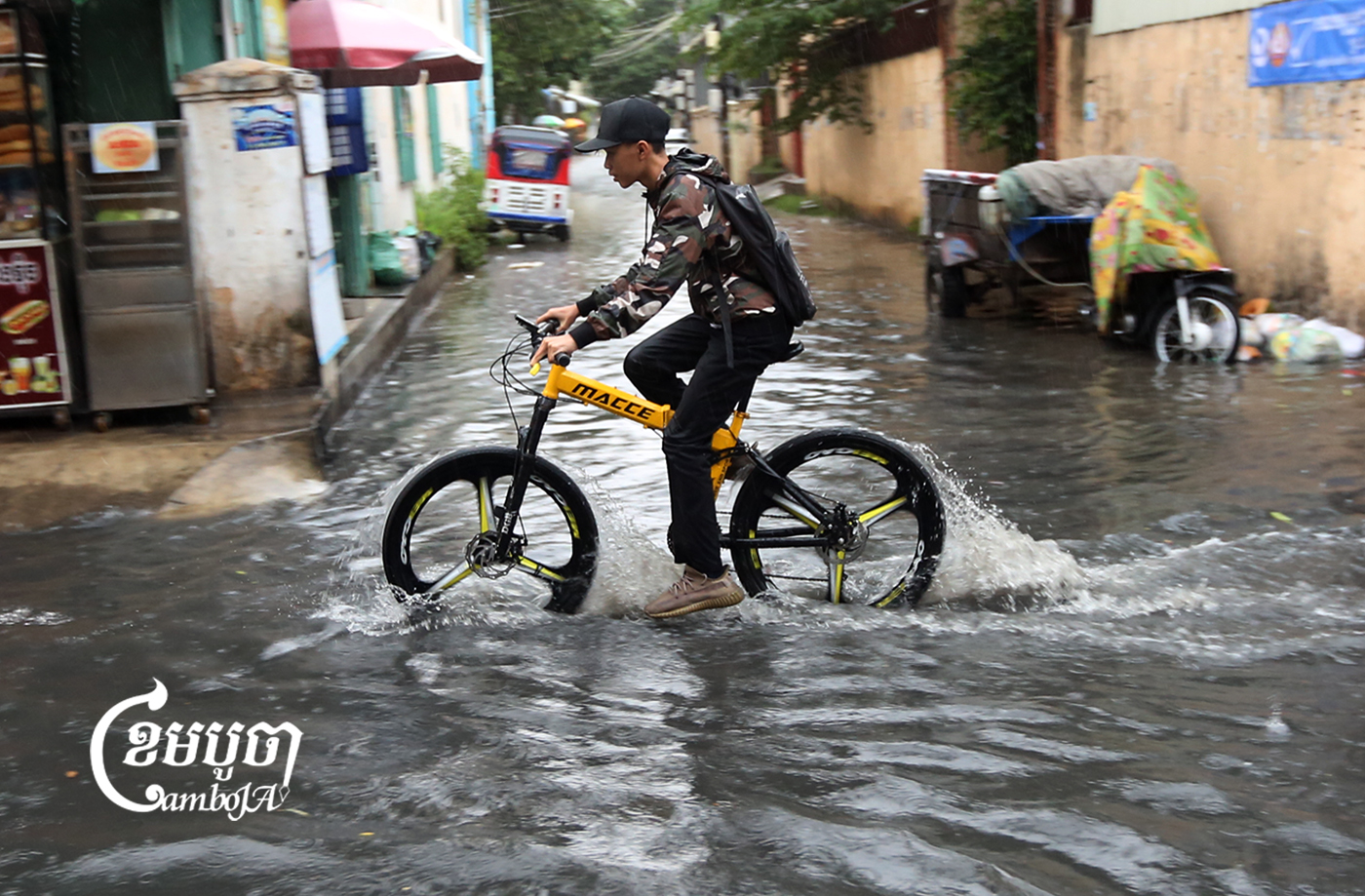
Sam Piseth, director of Phnom Penh’s Public Work Department, said so far there is 880 km of drainage system coverage across Phnom Penh.
But with a total of 2,640 km of roads snaking through the capital, more than 5,000 km of drainage is still needed.
“We still lack much of the drainage system and we need years to install the system,” he said.
Much of Phnom Penh sits on low land noted Piseth, and just 40 mm, or 1.5 inches, of rainfall per hour can cause flooding. However, he said, the level of inundation has already been reduced by a third due to new infrastructure.
He said now the government is developing a pumping station at Boeung Tumpun, which will help further reduce flooding in the Capital.
Piseth denied that lake infilling can impact flooding, and said infilling was necessary to meet the needs of an expanding city. Flooding, he noted, can be offset with proper planning.
“If we do not expand the city for development, we will also face challenges due to population growth,” he said. “But more importantly, a flood protection solution is being made following the master plan of urban development.”
He said Phnom Penh’s Public Works Department is now working with the Japan International Cooperation Agency (JICA) to develop the drainage system in the areas east and south of Phnom Penh International Airport.
Yuji Shinohara, a representative of JICA’s Cambodia office, told CamboJA that the latest flood protection and drainage improvements should see maximum inundation drop from 50 cm to 20 cm, and flood duration shortened from as much as 24 hours to just 2 hours. JICA and City Hall began surveying the prospective drainage sites in April.
“After the survey, we will confirm the project target area together with Phnom Penh Capital Administration and Department of Public Works and Transport,” he said.
Soeung Saran, executive director of Sahmakum Teang Tnaut (STT), said that JICA and the city’s flood prevention efforts in recent years appear to be working.
“We did not go into detail about the drainage system, but the drainage system seems to be improving,” he said.
However, he said, the destruction of reservoirs by landfilling ruined a highly functional natural flood prevention system.
“We also need to look at climate change and other developments, especially the elimination of important lakes such as Boeung Tumpun and Boeung Tamok,” he said. “Natural lakes are very important in reducing flooding in the city and as a place for biodiversity.”
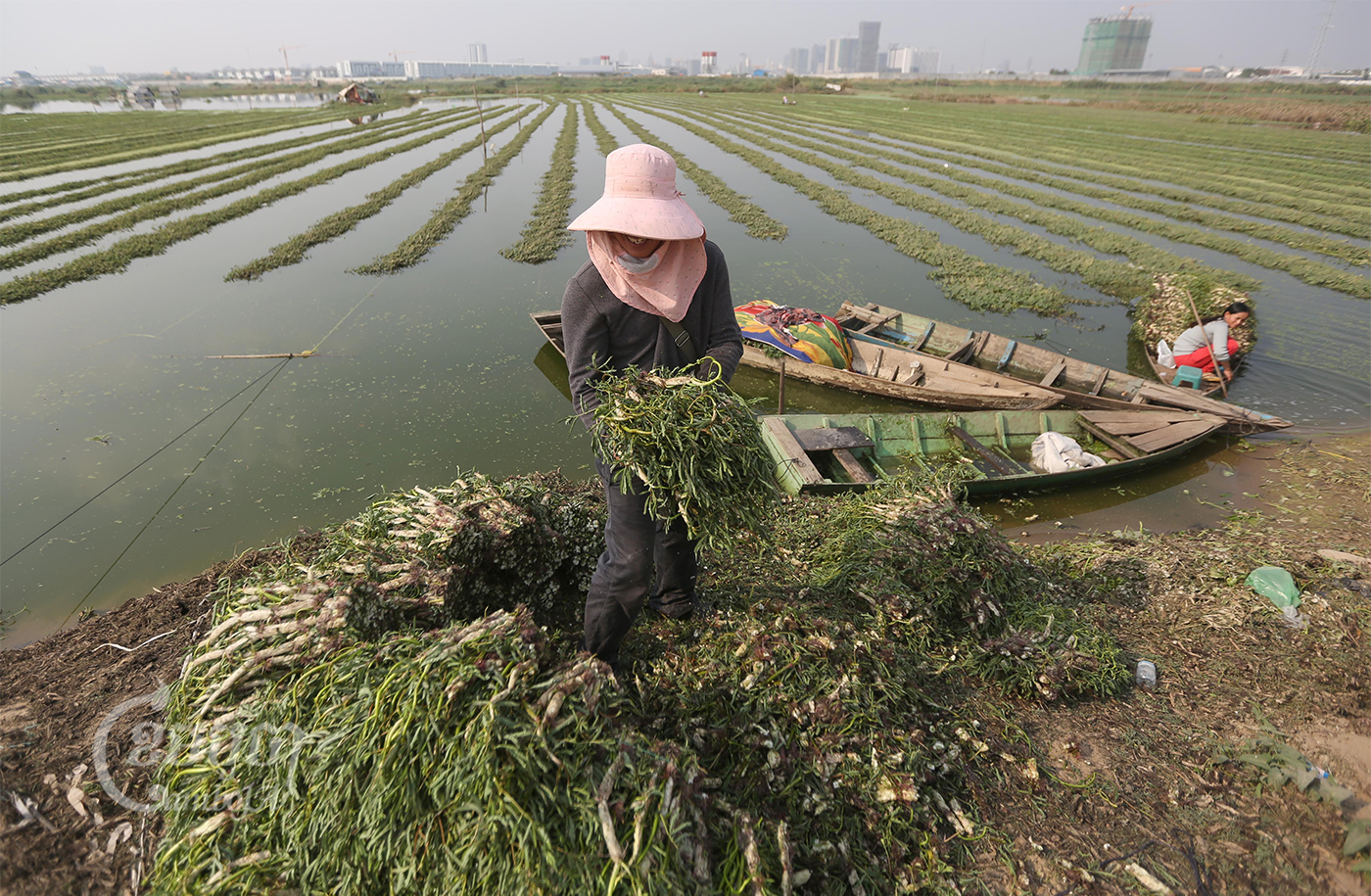
A 2020 joint report by Licadho, Cambodia Youth Network, Equitable Cambodia, and STT found that more than one million people across Phnom Penh are facing the risk of increased flooding due to the destruction of Boeung Tumpun and Cheung Ek wetlands in Phnom Penh’s south.
The report estimated that 1,500 hectares of wetlands would be reduced by more than 90 percent, to just 107 hectares. Those wetlands “serve two vital public services: alleviating flooding from Phnom Penh by storing all the city’s rainwater, and partly treating the city’s wastewater before it reaches fish stocks in the Bassac River.”
In 2016, the 3,239.7 hectare Boeung Tamok, also known as Boeung Kobsrov, was declared by the government to be public, state-owned property.
However, a 2021 STT report found that the government later revised the lake’s status at least 17 times to privatize the lake. The new land that fills the lake is currently being parceled off for development to companies and individuals.
San Chey, the executive director at the Affiliated Network for Social Accountability (ANSA), said when it comes to “development”, consideration of urban flooding is paramount.
“We want to see the government pay attention to social inclusion in the urban development process to ensure that the development follows suit, especially to the property development,” he said. “When sewers and roads are damaged, the state budget will be wasted.”



